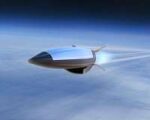NATO is facing a critical lag in deploying autonomous drones and robotic systems compared to adversaries like Russia and China. Despite ambitious innovation programs and increased funding for dual-use technologies, senior commanders warn that bureaucratic inertia and fragmented procurement processes are slowing down operational deployment. As the battlefield shifts toward AI-enabled autonomy and swarming UAVs, NATO’s ability to adapt may determine its strategic relevance.
Top NATO General Sounds Alarm on Tech Adoption Pace
General Christopher Cavoli, NATO’s Supreme Allied Commander Europe (SACEUR), recently voiced concern that the alliance is not fielding new warfighting technologies—particularly drones and robotic platforms—fast enough to counter near-peer threats. Speaking at a NATO industry conference in Germany in June 2024, Cavoli emphasized that while innovation initiatives exist on paper, real-world deployment remains sluggish.
“We are not moving fast enough,” he stated bluntly. “Our adversaries are fielding capabilities more quickly than we are.” He cited examples of Russian use of loitering munitions and Chinese advances in drone swarms as indicators of how rapidly the threat landscape is evolving.
This warning echoes similar concerns raised by U.S. Deputy Secretary of Defense Kathleen Hicks under the Replicator Initiative—a Pentagon effort to rapidly deploy thousands of attritable autonomous systems within 18–24 months to counter Chinese mass production advantages.
Russia’s Battlefield Innovation Pushes NATO to Reassess
The war in Ukraine has become a live testbed for drone warfare evolution. Russian forces have deployed large volumes of FPV (first-person view) kamikaze drones with low cost but high tactical effect. Ukraine has responded with its own drone innovation surge—including long-range strike UAVs like the UJ-22 Airborne or RAM II loitering munitions—but both sides demonstrate how autonomy at scale can shape modern conflict.
Russia’s integration of electronic warfare (EW), ISR (intelligence-surveillance-reconnaissance), artillery coordination via UAVs, and even AI-assisted target recognition is forcing NATO planners to rethink traditional force structures. The Russian military-industrial complex has also shown agility by adapting commercial components into military-grade platforms under sanctions pressure—something Western procurement cycles often struggle with due to regulatory rigidity.
- Russian FPV drones: Used en masse for anti-armor roles with real-time targeting via Starlink-like comms links
- KUB-BLA & Lancet loitering munitions: Deployed tactically against air defenses and logistics hubs
- AI-enhanced ISR: Leveraged for faster kill chains via automated image classification from drone feeds
NATO’s Innovation Ecosystem: DIANA and Beyond
NATO has launched several initiatives aimed at accelerating defense tech adoption across its 32-member alliance. Chief among them is DIANA—the Defence Innovation Accelerator for the North Atlantic—which connects startups with military end-users through test centers across Europe and North America.
DIANA focuses on nine priority areas including autonomy, energy resilience, quantum sensing, secure communications, AI/ML integration into C4ISR systems, space-based ISR assets, advanced materials for survivability enhancement, biotech for soldier performance optimization—and critically—human-machine teaming in combat environments.
The alliance also created the NATO Innovation Fund (€1 billion) to invest directly into dual-use technology firms developing capabilities relevant for future warfare scenarios. However, critics argue that while these frameworks exist on paper or early-stage pilots (TRL 3–5), few have translated into fielded systems ready for brigade-level deployment or multinational interoperability testing under STANAG protocols.
Bureaucracy vs Battlefield Urgency: Procurement Bottlenecks
A recurring theme among defense analysts is that Western democracies’ acquisition models—designed around peacetime accountability—are ill-suited for wartime tempo adaptation. Unlike Russia or China where centralized command economies can fast-track R&D-to-field transitions within months (sometimes bypassing safety checks), NATO countries must navigate layers of legal compliance (e.g., ITAR/EAR restrictions), multi-national consensus building (via NAC approvals), and industrial lobbying pressures.
This results in delays such as:
- Slow STANAG certification: Autonomous platforms must meet interoperability standards across all member states before deployment
- Divergent national requirements: Different doctrines lead to fragmented demand signals from member militaries
- Lack of shared testing infrastructure: No unified range network exists for joint drone swarm trials or EW resilience validation
The Swarm Gap: Autonomy at Scale Still Elusive
The most pressing shortfall lies not just in individual drone types but in orchestrated autonomous operations—what militaries call “swarming.” While companies like Anduril Industries (U.S.), Helsing (Germany), SpearUAV (Israel), or Milrem Robotics (Estonia) have demonstrated advanced prototypes capable of semi-autonomous coordination using edge-AI processors or mesh networking protocols like MANETs over SDRs—few have been adopted at scale by NATO forces.
This leaves a gap between concept demonstrations at events like DSEI or Eurosatory versus actual battlefield-ready formations capable of executing distributed ISR-strike missions autonomously under denied-GPS conditions or contested EM spectrum environments.
Toward Faster Fielding Models: Lessons from Ukraine & Replicator
NATO may need to adopt elements from Ukraine’s agile tech ecosystem where civilian coders collaborate directly with frontline units via Telegram channels; new drone variants are tested within days; crowdfunding accelerates production; open-source software enables rapid mission reprogramming; modularity allows component swaps amid supply chain disruptions—all without waiting years for formal acquisition approval.
The U.S. Replicator Initiative similarly aims to bypass traditional DoD acquisition red tape by focusing on mass production of “attritable” autonomous systems using commercial supply chains—a model some European allies are now exploring through their own “drone surge” programs post-Ukraine lessons learned.
The Strategic Stakes: Autonomy as Deterrence Multiplier
If left unresolved, NATO’s lag could erode deterrence credibility against peer adversaries who increasingly view unmanned-autonomous capabilities as asymmetric equalizers against Western airpower dominance. A future conflict may hinge less on fifth-gen fighters or tanks—and more on who can deploy tens of thousands of autonomous agents across land-sea-air domains with resilient comms links under jamming conditions while maintaining human-on-the-loop control frameworks compliant with IHL norms.
Conclusion: From Talk to Tactical Reality
NATO recognizes the challenge—but recognition alone won’t close the capability gap unless matched by structural reform in procurement agility, cross-border R&D collaboration beyond flagship funds like DIANA/NIF, shared testbeds for autonomy validation under cyber/EW stressors—and above all—a cultural shift toward wartime urgency even during peacetime budgets.









